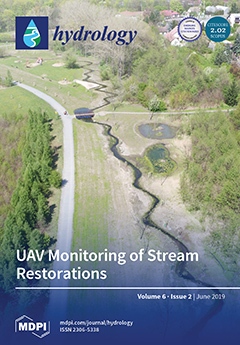The objective of this study was to establish drought classification maps to simulate and calculate the lack of discharge in the Ba River basin in Vietnam. The maps were established using three meteorological drought indices (the Standardized Precipitation Index (SPI), the Drought Index
[...] Read more.
The objective of this study was to establish drought classification maps to simulate and calculate the lack of discharge in the Ba River basin in Vietnam. The maps were established using three meteorological drought indices (the Standardized Precipitation Index (SPI), the Drought Index (J), and the Ped Index (Ped)), the Soil and Water Assessment Tool (SWAT) model, and the hydrological drought index (K
Drought). The results from the calculation of the SPI, Aridity Index (AI), and Ped at three stations (An Khe, Ayunpa, and MDrak) showed that the J index was suitable for the study area. Based on the J index, an extreme drought was predicted to occur at the Ayunpa, An Khe, and MDrak stations. During the calibration process, the SWAT Calibration Uncertainties Program (SWAT-CUP) model, with automatic algorithms, was used to select the parameters to optimize the SWAT model. For the calibration and validation, the observed discharge at two hydrology stations, An Khe and Cung Son, from the periods 1981–1991 and 1992–2002, respectively, were used. The simulated discharge was found to be acceptable, with the Nash–Sutcliffe efficiency (NSE), Percent bias (PBIAS), and R
2 reaching good levels in both calibration and validation. The results from the calculation of the drought index (K
Drought), and the established drought classification maps in 2016, showed that the most affected areas were the communes of the Gia Lai and Dak Lak provinces. The results from the simulation and calculations were found to be consistent with the situation that occurred in practice. The application of meteorological and hydrological drought indices, as well as the hydrological model, to support impact assessments of drought classification in space and time, as well as the establishment of forecasting and warning maps, will help managers to effectively plan policy responses to drought.
Full article





